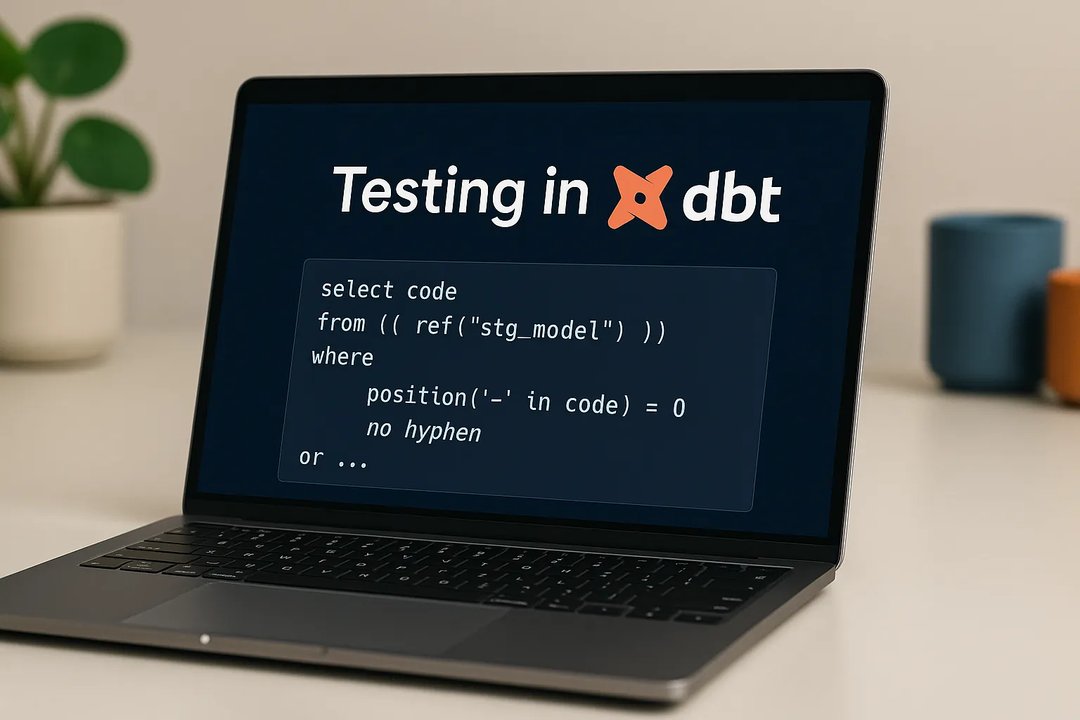
Maria Chojnowska
27 March 2023, 6 min read

What's inside
- When do we use data engineering?
- What languages can be used in data engineering?
- Which language for data engineering to choose?
- Contact us
Data engineer creates a work environment and data repository for data scientists and analysts, ensuring database and process infrastructure are reliable. A person in this position is focused on a specific architecture and requires analytical skills to investigate. Their tasks include testing new tools and technologies used in project results. As a technical position, data engineering requires experience and skills in assessment, such as programming, math, and computer science. Therefore some languages suit this position better than others.
When do we use data engineering?
Data engineering is used in various scenarios when there’s a need to collect, store, process, and analyze data efficiently and effectively. Some examples include:
- Building data pipelines to collect data from various sources, such as sensors, social media, and weblogs, and storing it in a central repository.
- Designing and implementing data warehousing solutions to store and manage large amounts of data and support reporting and analytics.
- Developing and maintaining data integration solutions to bring data from different systems and sources together and to ensure that data is consistent and accurate.
- Implementing data quality processes to ensure that data is complete, accurate, and consistent and to detect and correct errors and inconsistencies in the data.
- Developing and maintaining data governance processes to ensure that data is properly managed and protected and to ensure compliance with regulations and standards.
What languages can be used in data engineering?
Many programming languages are commonly used in data engineering, depending on the specific task or technology. Some of the most popular ones include:
- SQL (Structured Query Language) is used for managing and querying relational databases and data warehousing.
- Python is used for data exploration, data cleaning, building data pipelines, and machine learning models.
- Java and Scala are also widely used to build big data systems and pipelines using technologies like Apache Kafka and Apache Spark.
- R is often used for statistical analysis and data visualization.
- JavaScript and its libraries, like Node.js, are used when working with web-based data.
- C++ and C# are used when working with low-level systems and performance-critical tasks.
Python
There is no "best" language for data engineering, as the choice of language will depend on many factors. However, one of the most popular choices is Python. It has many libraries and frameworks that make it easy to perform tasks such as data cleaning, exploration, and visualization. It's also a general-purpose language, which allows data engineers to use it for multiple purposes, such as data pipelines, machine learning, and data visualization. The simplicity of the language and the vast amount of resources available makes it easy to learn and use, even for non-programmers.
Additionally, Python's popularity in the Data Science community makes it an obvious choice for data engineering since data engineers and scientists often work together to build and maintain data infrastructure and analytical models.
Some of the key libraries and frameworks for data engineering in Python include:
- NumPy and pandas for data manipulation and cleaning.
- Scikit-learn for machine learning and statistical modeling.
- Matplotlib and Seaborn for data visualization.
- PySpark for big data processing using Apache Spark.
- SQLAlchemy and other libraries for interacting with SQL databases.
- Dask and PyFlux for handling large and real-time data.
- Airflow, Luigi, and other libraries for building and managing data pipelines.
- PyTorch and TensorFlow for deep learning and neural network-based data processing.
SQL (Structured Query Language)
SQL is a popular choice for data engineering because it makes it possible to interact with databases transparently and efficiently. It can be used to perform a wide range of data management tasks, including:
- Creating and modifying tables, views, and other database objects.
- Loading and transforming data from various sources, such as CSV and Excel files, into a database.
- Querying and filtering data using SELECT statements.
- Joining data from multiple tables using JOIN clauses.
- Grouping and summarizing data using GROUP BY and aggregate functions such as SUM and COUNT.
- Updating and deleting data using UPDATE and DELETE statements.
- Creating and managing indexes to optimize query performance.
- Enforcing data integrity and consistency using constraints and triggers.
- Managing database security and user access.
SQL is a declarative language, which means you specify the outcome, and the database management system determines the best way to execute the query. It is widely used in data engineering and supported by many relational database management systems (RDBMS) such as MySQL, PostgreSQL, SQL Server, and Oracle.
Scala
Another programming language that is gaining popularity in data engineering is Scala. It’s all mainly because of its ability to handle big data processing and its compatibility with the Apache Spark framework.
Scala is a general-purpose programming language similar to Java but with more advanced features, such as support for functional programming. It runs on the Java Virtual Machine (JVM) and can use Java libraries, which makes it well-suited for big data processing and data engineering tasks.
It can handle tasks such as:
- Data processing and transformation using Spark's DataFrame and Dataset APIs.
- Building and running Spark applications using the Spark API.
- Creating and executing Spark jobs using the Spark Job Server.
- Creating and managing Spark Streaming jobs for real-time data processing.
- Connecting to various data sources such as Hadoop HDFS, Apache Cassandra, and Apache Kafka.
Scala also has a rich set of libraries and tools for data engineering tasks such as machine learning, data visualization, and data governance. Additionally, its support for functional programming makes it more suitable for concurrent and parallel processing, often required in big data processing.
R language
R is a programming language and environment for statistical computing and graphics commonly used in data engineering tasks such as data exploration, data visualization, and statistical modeling.
It has a wide range of libraries and packages that make it easy to perform data engineering tasks such as:
- Data cleaning and preparation using the dplyr, tidyr, and data.table packages.
- Data visualization using ggplot2, lattice, and other packages.
- Data exploration and statistical modeling using packages such as caret, glmnet, and randomForest.
- Time series analysis and forecasting using packages such as forecast and xts.
- Text mining and natural language processing using packages such as tm, stringr, and quanteda.
- R's popularity in the data science and statistics communities makes it a natural choice for data engineering tasks that involve statistical modeling and data visualization.
R also has a number of libraries and packages for working with big data, such as bigmemory, ff, and data.table. These packages allow you to work with large datasets in R and can be used to perform data engineering tasks on big data sets.
Which language for data engineering to choose?
The choice of language for data engineering will depend on the specific use case and the tools and technologies used. Different languages have strengths and weaknesses, and particular languages are better suited to specific tasks.
Ultimately, choosing a language for data engineering will depend on the project's specific requirements, the team's skills and expertise, and the technologies already in use in the organization. In some cases, it may be beneficial to use multiple languages to take advantage of their strengths.
Contact us
Choose Sunscrapers for your data engineering or data science project to benefit from our versatile experience and world-class expertise in Python.
We can help you unlock the hidden potential of your data to improve decision-making processes, automate tasks, and boost operational efficiency.
Contact us or drop us a line at hello@sunscrapers.com
##Read more
- How To Become A Data Scientist?
- Here's why Python is so popular in Machine Learning
- Data visualization in Python, Part 1: Cellular Automata
- 24 Python machine-learning libraries for data science projects
- Data warehouses - what they are and how to classify them (Part 2)
- Python or R? What are the differences?



